Satisfy Your Need for Top-notch, Low-Light Hunting Binoculars with Two Options from Steiner
Tom McHale 08.03.17
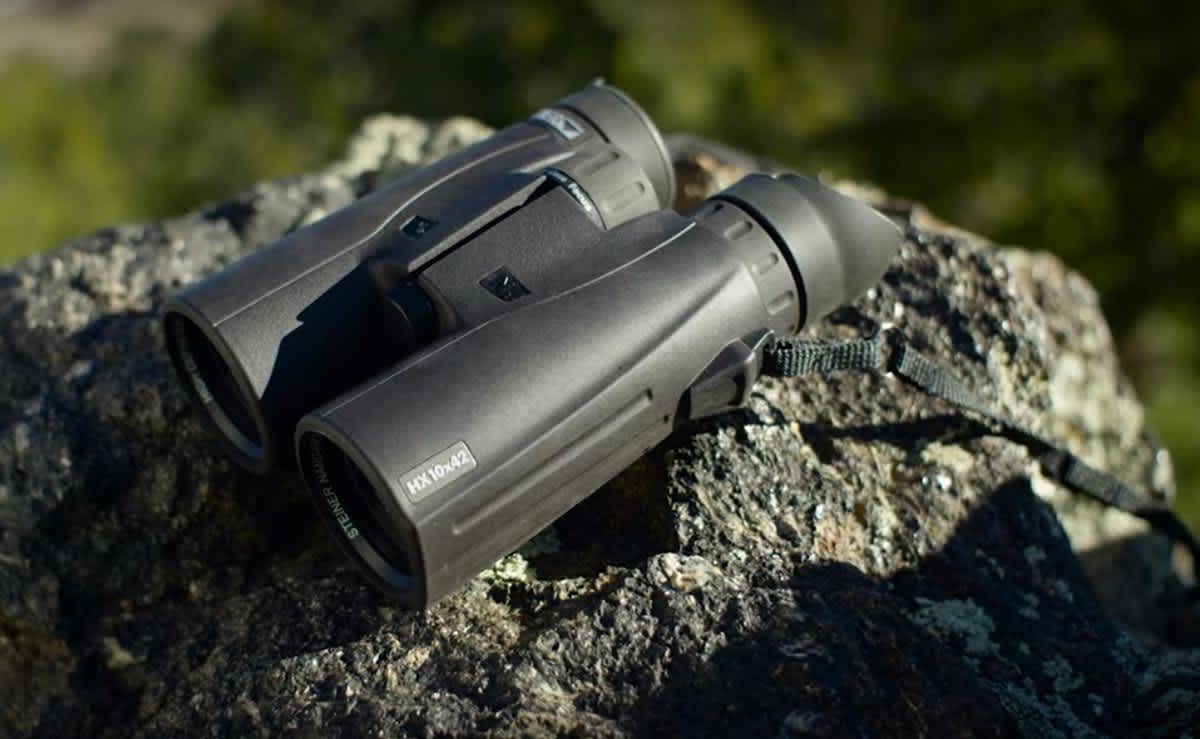
Scopes are for shooting, and binoculars are for looking.
Have you ever been out in the field and spotted another shooter across the valley checking you out through his or her scoped rifle? I have, and it generally results in two very immediate urges: take cover and think about returning fire. This lazy glassing habit drives me nuts, mainly because it violates three out of the four gun safety rules: Treat a gun as always loaded; never point it at anything you’re not willing to destroy; and be sure of your target and what’s behind it.
The practice is also entirely unnecessary.
If you’re going outdoors to hunt, shoot, hike or whatever floats your boat, you really ought to invest in a high-quality binocular. A bino is specifically designed and built for the purpose of (safely) looking for and finding stuff, and once you find something, you can check it out to your heart’s content without frightening anyone.
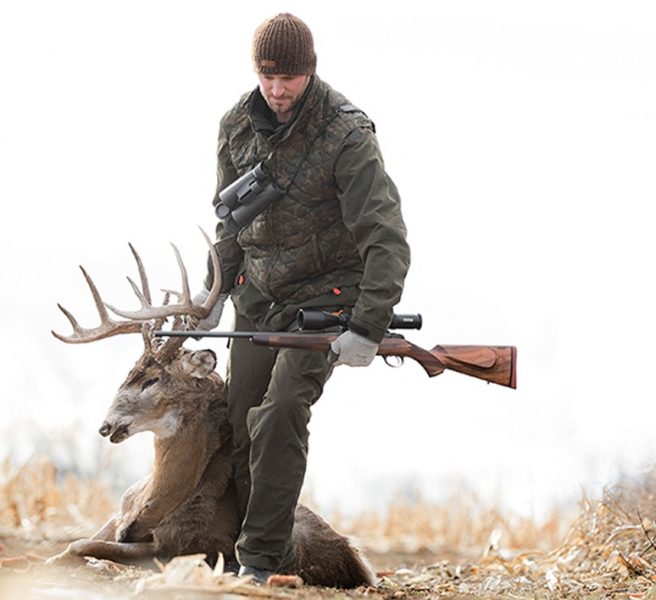
A binocular is handy, light, and you can hang the optic around your neck for quick access. A bino is intuitive and it uses the power of both of your eyeballs. That means that nifty human vision features such as distance perception and three-dimensional perception are supported because you don’t have to squeeze one eye closed. A good binocular can not only provide you with a crisp and clear magnified picture, but it also offers a great field-of-view so it’s easy to scan big areas. As a tangible example, the Steiner HX 10×42 model shown below offers a field-of-view of 326 feet at 1,000 yards.
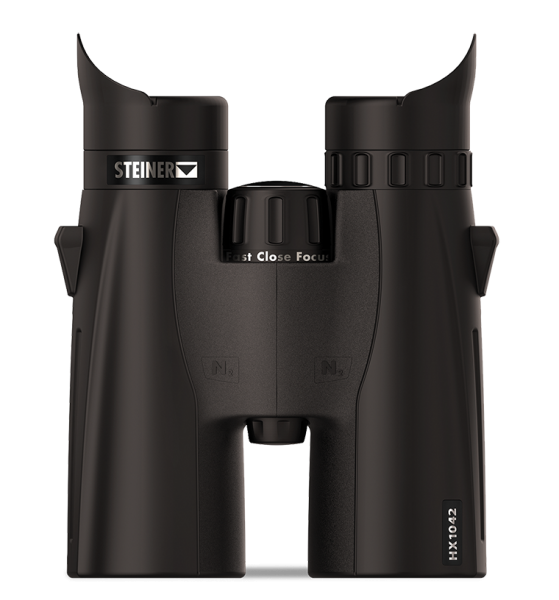
Just as with high-quality riflescopes, the underlying details are a big deal when it comes to selecting binoculars, especially a set that you’ll use for hunting. Top-notch glass is worth every penny, and the folks at Steiner have been making it since 1947. In fact, you can thank Steiner for creating nitrogen-filled optics that prevent fogging during rapid changes of temperature.
Recently, I’ve been experimenting with a Steiner HX 10×42 binocular. As you might guess by the product name, these offer 10X fixed magnification and feature 42mm objective lenses. That ratio of magnification to objective lens size is just about perfect. Why? The exit pupil (“beam” of light coming to your eyeball) is 4.2mm in diameter, and that’s just about the size of the average human’s pupil diameter in normal conditions. As a result, all of your “vision capacity” is fully utilized, and no more optical information is delivered than your eye can process.
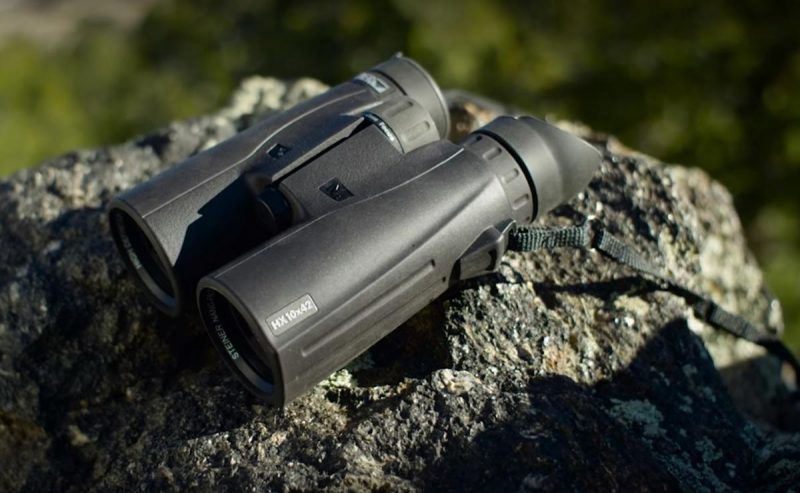
The HX 10×42 is built for field use, and so far, I’ve found the bino to be “me proof.” The body is coated with rubber armor. I’ve been using the optic for a couple of weeks and have yet to produce a scratch or dent. That’s a record in my book. But seriously, not only will the rubber exterior protect your glass investment, it helps keep you quiet while you’re off tripping through the woods. It’s one less piece of metal to alert your game with an unexpected “clang” sound.
The HX 10×42 binocular has a roof prism design — that’s why the body uses “straight” lens housings. All binoculars use prisms of some sort to correct the image before it gets to your eye. Without them, you’d see everything upside down and backward. The difference between roof and traditional porro prisms are mainly in how the internal prisms are aligned. Porro prism binoculars have the prisms in each tube offset from each other. That’s why the objective lens sections of the body dogleg out from the eyepieces. With the roof design, the prisms are aligned one behind the other, so the tubes are straight from eye piece to objective lens. In general, roof designs are a little harder to manufacture and therefore more expensive all else being equal.
Each eyepiece has an independent eye-relief adjustment — the eyecups rotate and click-lock into several different positions. I wear glasses, and that works like a champ with the eyecups in their closed position. Without my glasses, I can easily focus the HX 10x42s by extending the eyecups to their outermost position.
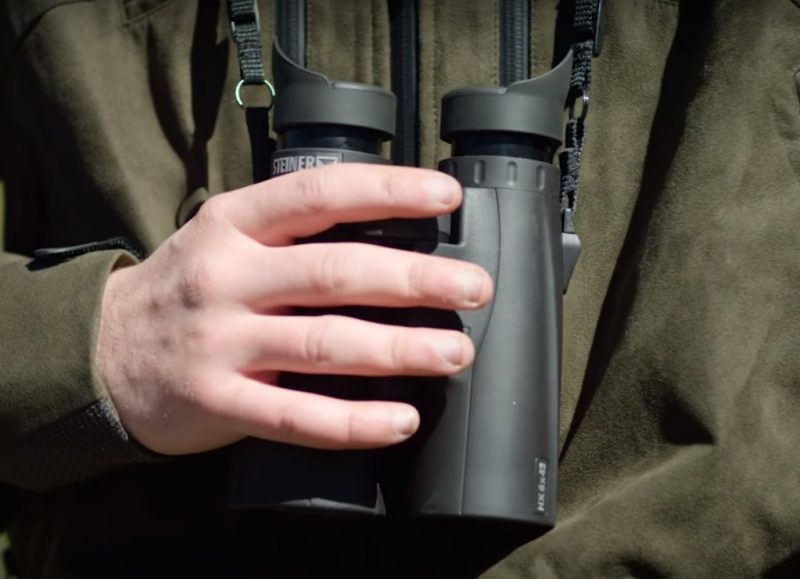
The HX 10x42s use a Fast-Close-Focus central focusing wheel combined with a dioptric adjustment for the left eye. To match them to your eyesight, close your right eye and focus the left eyepiece. Now, the center focus wheel can be used to quickly focus on targets. The Fast-Close-Focus feature means the wheel is rotated minimally to obtain quick and sharp images from as close as 8 feet to infinity.
As for specs, the HX 10×42 is a full-size bino, measuring 5.8 inches (h) x 4.9 inches (w); weight is 28 ounces. Unlike compact binos, which are too light to hold steady for extended glassing, or massive optics that require a Sherpa, the HX 10×42 falls into the sweet spot of being just right for hunters.
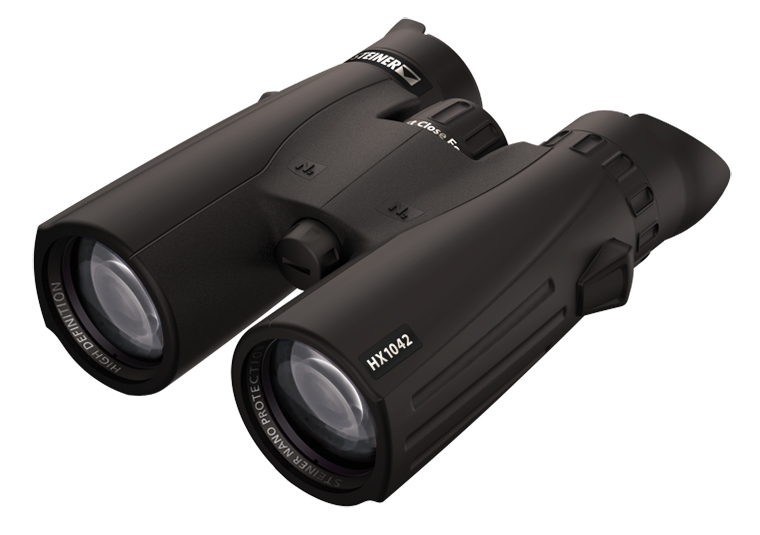
The saying “You get what you pay for” is true for most of the consumer products we use in our lives, and hunting optics are no exception. The MSRP for the HX 10×42 is $999.99. True, you probably won’t find that much money by flipping over the cushions in your couch. However, this bino is hard to beat. Clarity and brightness are great, and there’s no loss of visual quality out toward the edges of your field-of-view.
Whether we’re talking scopes or binoculars, clarity is everything. I’ll take a clear view with lower magnification any day. That’s what helps you differentiate minor shades of contrast to find your game in the brush. Once found, clear glass — like that in the Steiner HX 10×42 — helps you see details so you can count antler points or estimate rack size from far away.
The New Bino on the Block
If you want a tremendous binocular for scouting whitetails well after the sun has set on summertime green fields, check out the new Steiner ShadowQuest 8×56 model (below). This binocular is designed and optimized to shine in low-light conditions. Most of the features in the ShadowQuest 8×56 are there to give you crucial extra minutes of clear visibility on the night side of dawn and dusk. The Diamond Night lens coating provides over 96 percent light transmission.
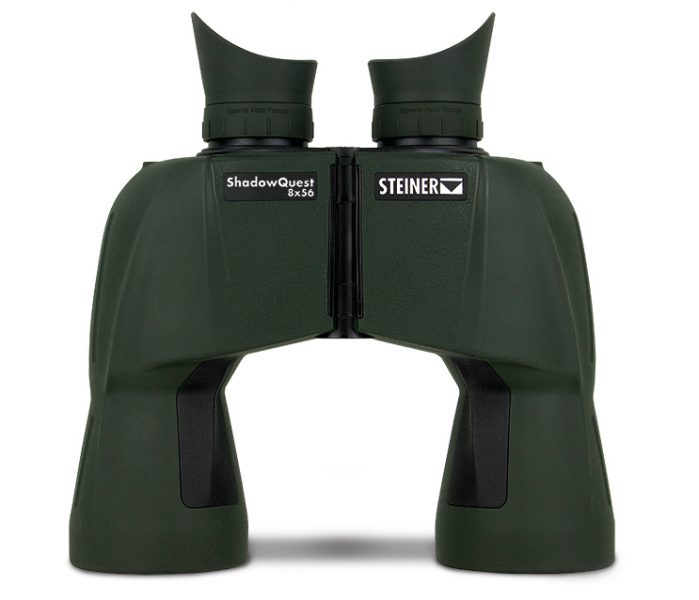
One of the other differences you’ll notice is the 7mm exit pupil. While the HX 10x42s feature a 4.2mm exit pupil, the ShadowQuest transmits a 7mm-wide view to your eye. In low light, your pupil expands and can accept a larger diameter beam, hence the 7mm width of the ShadowQuest.
You’ll also notice that the ShadowQuest 8×56 features that classic dogleg body. That’s because they use an internal porro prism as compared to the roof prism design of the HX 10×42. With the ShadowQuest, that porro prism gives you a wider field-of-view — 441 feet at 1,000 yards.

The ShadowQuest bino also uses a Sports Auto Focus system. Rather than focusing a center wheel as needed, you focus each eyepiece one time. From then on, everything from 20 yards to infinity remains in focus. With this method, you won’t want to be switching users frequently as other users may need to tweak the eyepieces based on their particular vision. Then again, as a high-end binocular, you’re going to want this optic to be primarily single-user anyway.
Getting the right tools for looking is a smart investment. The Steiner HX 10×42 has an MSPR of $999.99, and the ShadowQuest 8×56 costs slightly more with an MSRP of $1,199. This is not cheap glass. However, not only will your searching and spotting results improve, others in the field will thank you, too.

